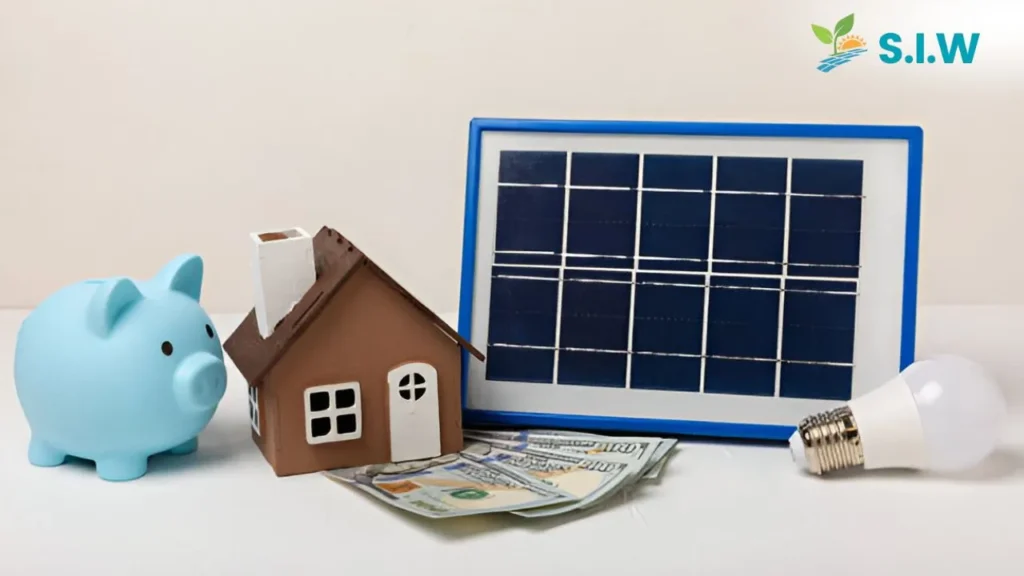Adopting solar energy systems is not just an eco-friendly choice; it’s a smart financial decision. Homeowners and businesses increasingly recognize the substantial cost savings that solar energy offers. This article explores the estimated savings associated with solar installations, the factors that influence these savings, and the potential return on investment.
Understanding the Financial Impact of Solar Energy
Initial Investment and Long-Term Savings
The upfront cost of solar panel installation can be a significant consideration for many potential users. The average cost of a residential solar system in the United States ranges from $15,000 to $30,000, depending on various factors, including system size, installation complexity, and location. While this might seem steep, various financial incentives, such as federal tax credits, state rebates, and local incentives, can significantly reduce these initial costs.
The Federal Investment Tax Credit (ITC) allows homeowners to deduct 30% of the installation cost from their federal taxes. Additionally, many states offer incentives that can further reduce out-of-pocket expenses. In California, for instance, the California Solar Initiative provides rebates that can save homeowners thousands.
Calculating Yearly Savings
Once installed, solar energy systems can drastically reduce monthly electricity bills. The average American household spends approximately $120 per month on electricity. By switching to solar, homeowners can save an average of $1,000 to $1,500 annually. This figure varies depending on energy consumption, local electricity rates, and solar system performance.
For example, a solar system with a capacity of 6 kilowatts (kW) might produce around 7,200 kWh per year. If electricity costs 15 cents per kWh, the annual savings would be around $1,080. Over 25 years, the savings accumulate to approximately $27,000, showcasing the significant long-term benefits of solar energy.
Payback Period
The payback period refers to the time it takes for the savings generated by solar energy to equal the initial investment. On average, the payback period for solar installations in the U.S. is between 5 to 10 years. However, this can vary based on location, energy consumption, and available incentives. Regions with high electricity costs and generous incentives typically see quicker payback periods.
Once the payback period is complete, homeowners can enjoy free electricity for the remaining lifespan of the solar panels, which typically ranges from 25 to 30 years.
Factors Influencing Solar Savings
Location and Solar Exposure
The geographic location of a solar installation significantly impacts its efficiency and potential savings. Areas with higher sunlight exposure, such as the Southwestern United States, can generate more energy than regions with less sunlight. For instance, solar panels in Arizona can produce over 1,500 kWh per installed kW annually, while those in New York might only generate around 1,200 kWh.
System Size and Design
The size and design of the solar system also play a crucial role in determining savings. A properly sized system that meets a homeowner’s energy needs will maximize savings. Oversized systems can lead to unnecessary costs, while undersized systems may not provide sufficient energy, resulting in higher electricity bills.
Homeowners should consider their energy consumption patterns and work with solar professionals to design an optimal system. Features such as solar battery storage can further enhance savings by allowing homeowners to store excess energy generated during the day for use at night.
Utility Rates and Net Metering Policies
Electricity rates vary significantly by region and utility provider. In areas with high rates, the savings from solar installations can be more pronounced. Additionally, net metering policies allow solar homeowners to sell excess energy back to the grid, providing credits that offset future energy costs. In states with favorable net metering policies, homeowners can achieve even greater savings.
Long-Term Benefits Beyond Immediate Savings
Increased Home Value
Investing in solar energy can significantly increase a home’s market value. Studies indicate that homes equipped with solar panels sell for an average of 4% more than comparable homes without solar. For a $300,000 home, this could mean an additional $12,000 in value, which can be attractive for potential buyers looking for energy-efficient features.
Protection Against Rising Energy Costs
One of the most compelling reasons to invest in solar is the protection it offers against rising energy costs. Historically, electricity prices have risen by about 3% per year. By investing in solar, homeowners can hedge against these increases, effectively locking in their energy costs for decades.
Environmental Impact and Sustainability
While the focus is primarily on financial savings, solar energy also contributes to environmental sustainability. By reducing reliance on fossil fuels, solar energy helps decrease greenhouse gas emissions and combat climate change. Homeowners who invest in solar can take pride in their contribution to a greener planet, enhancing their overall quality of life.
The Case for Solar Savings
The financial benefits of solar energy are compelling, making it a worthwhile investment for homeowners and businesses alike. With the potential for significant annual savings, a reasonable payback period, and increased property values, solar energy presents a strong case for those considering a switch.
When assessing potential savings, consider factors like location, system size, and utility rates to maximize the financial return on your solar investment. With the ongoing advancements in solar technology and decreasing installation costs, there has never been a better time to embrace solar energy.
Solar installations not only represent a step toward energy independence but also provide a sustainable, cost-effective energy solution for the future. Make the switch today, and start reaping the financial benefits of solar energy.








